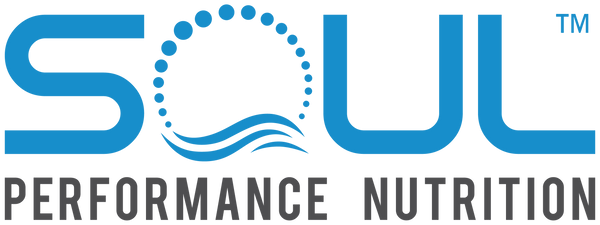
Colostrum: Nature's Blueprint for Health and Vitality
There exists a substance so potent, so foundational, that it lays the very groundwork for our existence. This substance is colostrum—a golden elixir teeming with essential nutrients and bioactive compounds. Far more than mere nourishment, colostrum is the sophisticated blueprint nature provides to guide the intricate dance of cellular development and fortify our immune defenses. Today, we delve deep into this fascinating world, uncovering how colostrum's growth factors profoundly impact our health and vitality.
IGF-1 and IGF-2: The Architects of Growth
Imagine a team of master builders orchestrating the construction of a grand edifice. IGF-1 and IGF-2 are these architects at the molecular level.
- IGF-1 (Insulin-like Growth Factor 1): A peptide hormone mirroring insulin, IGF-1 is composed of a complex chain of amino acids. It stimulates bone growth and tissue development, playing a critical role in cell proliferation and differentiation. By promoting protein synthesis and glucose uptake, it ensures cells have the energy and materials needed for repair and regeneration.
- IGF-2 (Insulin-like Growth Factor 2): Sharing similarities with IGF-1, IGF-2 is especially pivotal during fetal development. It governs the growth and differentiation of tissues and organs, laying a robust foundation for the body's structural integrity.
Together, these growth factors are the unsung heroes ensuring that from our earliest moments, our bodies are equipped to grow and thrive.
TGF-β (Transforming Growth Factor-beta): The Maestro of Balance
In the symphony of cellular processes, TGF-β emerges as the conductor, ensuring harmony and balance.
- Cell Growth Inhibition: TGF-β acts as a gatekeeper, preventing unchecked cell proliferation that could lead to disorders.
- Cell Differentiation: It guides cells to develop specialized functions, crucial during embryonic development and tissue repair.
- Extracellular Matrix Regulation: By stimulating the synthesis of extracellular components, it orchestrates tissue remodeling.
- Immune Regulation: TGF-β tempers the immune response, preventing overactivity that could harm the body.
By modulating these processes, TGF-β maintains the delicate equilibrium necessary for optimal health.
Epidermal Growth Factor (EGF): The Skin's Best Friend
Our skin, the body's largest organ, demands constant care and renewal. EGF steps in as a vital contributor to skin health.
- Cell Growth and Division: EGF stimulates the proliferation of skin cells, aiding in repair and rejuvenation.
- Cell Differentiation: It assists in the development of specialized epithelial cells, maintaining tissue integrity.
- Wound Healing: By promoting cell migration and new blood vessel formation, EGF accelerates the healing process.
- Anti-Aging: Its regenerative properties make it a prized ingredient in skincare, combating signs of aging.
EGF doesn't just repair; it revitalizes, ensuring our skin remains a resilient barrier against the world.
Platelet-Derived Growth Factor (PDGF): The Regenerator
When injuries occur, swift and efficient healing is paramount. PDGF plays a crucial role in this regenerative process.
- Cell Proliferation: It stimulates the division of cells essential for healing, such as fibroblasts and smooth muscle cells.
- Cell Migration: PDGF guides cells to injury sites, facilitating timely repair.
- Extracellular Matrix Influence: By regulating collagen synthesis, it supports tissue strength and flexibility.
- Angiogenesis: PDGF promotes the formation of new blood vessels, ensuring tissues receive necessary nutrients.
Through PDGF, the body possesses a powerful tool to restore itself, emphasizing colostrum's role in recovery.
Fibroblast Growth Factors (FGFs): The Versatile Multitaskers
The FGF family is a group of signaling proteins influencing a multitude of bodily functions.
- Cell Proliferation and Differentiation: FGFs are key in tissue development and repair across various systems.
- Nervous System Development: They support neurogenesis and synaptic plasticity, vital for learning and memory.
- Metabolic Regulation: Certain FGFs help maintain glucose balance and influence metabolic processes.
FGFs highlight colostrum's comprehensive impact, touching everything from wound healing to cognitive function.
Nerve Growth Factor (NGF): The Guardian of Neurons
At the core of our nervous system's health lies NGF, a critical component for neural well-being.
- Neuron Survival and Maintenance: NGF ensures the longevity and functionality of nerve cells.
- Synaptic Plasticity: It enhances the connections between neurons, fostering cognitive abilities.
- Nerve Regeneration: Post-injury, NGF stimulates axon growth, aiding in the restoration of neural pathways.
- Immune Interaction: NGF can modulate immune responses, intertwining neural health with immunity.
By safeguarding our neural networks, NGF underscores the profound depth of colostrum's benefits.
Granulocyte-Macrophage Colony-Stimulating Factor (GM-CSF): The Immune Amplifier
A robust immune system is our shield against the unseen threats. GM-CSF bolsters this defense.
- White Blood Cell Production: It stimulates the creation of granulocytes and macrophages in the bone marrow.
- Macrophage Activation: Enhancing their pathogen-fighting abilities, GM-CSF empowers these cells to protect effectively.
- Antigen Presentation: By aiding in this process, it ensures the immune system recognizes and responds to threats.
- Inflammation Regulation: GM-CSF orchestrates the immune response to infection or injury, balancing action and control.
Through GM-CSF, colostrum equips our bodies with the cellular arsenal needed for immune vigilance.
Interleukins: The Messengers of Immunity
Communication is the cornerstone of an effective immune response. Interleukins are the couriers conveying critical information.
- Activation and Proliferation: They stimulate immune cells, such as T cells and B cells, enhancing our defense mechanisms.
- Inflammation Regulation: Interleukins like IL-6 manage inflammatory responses, ensuring they are appropriate and effective.
- Cellular Guidance: Acting as chemoattractants, they direct immune cells to where they're needed most.
By facilitating seamless communication, interleukins ensure our immune system operates as a cohesive unit.
Thymosin: The Educator of Immune Cells
A well-trained defense is superior to sheer numbers. Thymosin, particularly thymosin alpha-1, educates and refines our immune cells.
- T Cell Maturation: It guides T lymphocytes through their development, ensuring they function correctly.
- Immune Enhancement: By boosting the activity of various immune cells, thymosin strengthens our overall immunity.
- Homeostasis Maintenance: It helps balance immune responses, preventing overreactions that could harm the body.
Thymosin's role in shaping a competent immune system is indispensable, highlighting colostrum's foundational support.
Cytokines: The Coordinators of Defense
At the helm of immune coordination are cytokines, such as TNF-α and interferons.
- Tumor Necrosis Factor-alpha (TNF-α): It plays a pivotal role in inflammation and can induce apoptosis in harmful cells.
- Interferons: Critical for antiviral defense, they inhibit viral replication and activate immune cells.
- Chemokines: These cytokines guide immune cells to sites of infection, ensuring timely responses.
Cytokines are the strategists, orchestrating the complex interplay of immune functions to protect the body efficiently.
The Grand Design of Colostrum
Beyond being a nutrient-rich substance, colostrum is a masterful compilation of growth factors and immune modulators. It is nature's way of providing a newborn—or even an adult—with a head start toward a healthy, resilient life. The growth factors within colostrum not only stimulate physical development but also lay down a comprehensive blueprint for robust immunity and long-term vitality.
These statements have not been evaluated by the Food and Drug Administration. This product is not intended to diagnose, treat, cure or prevent any disease. This article is for informational purposes only and is not a substitute for professional medical advice. Always consult your healthcare provider regarding any health concerns or before starting new supplements.
